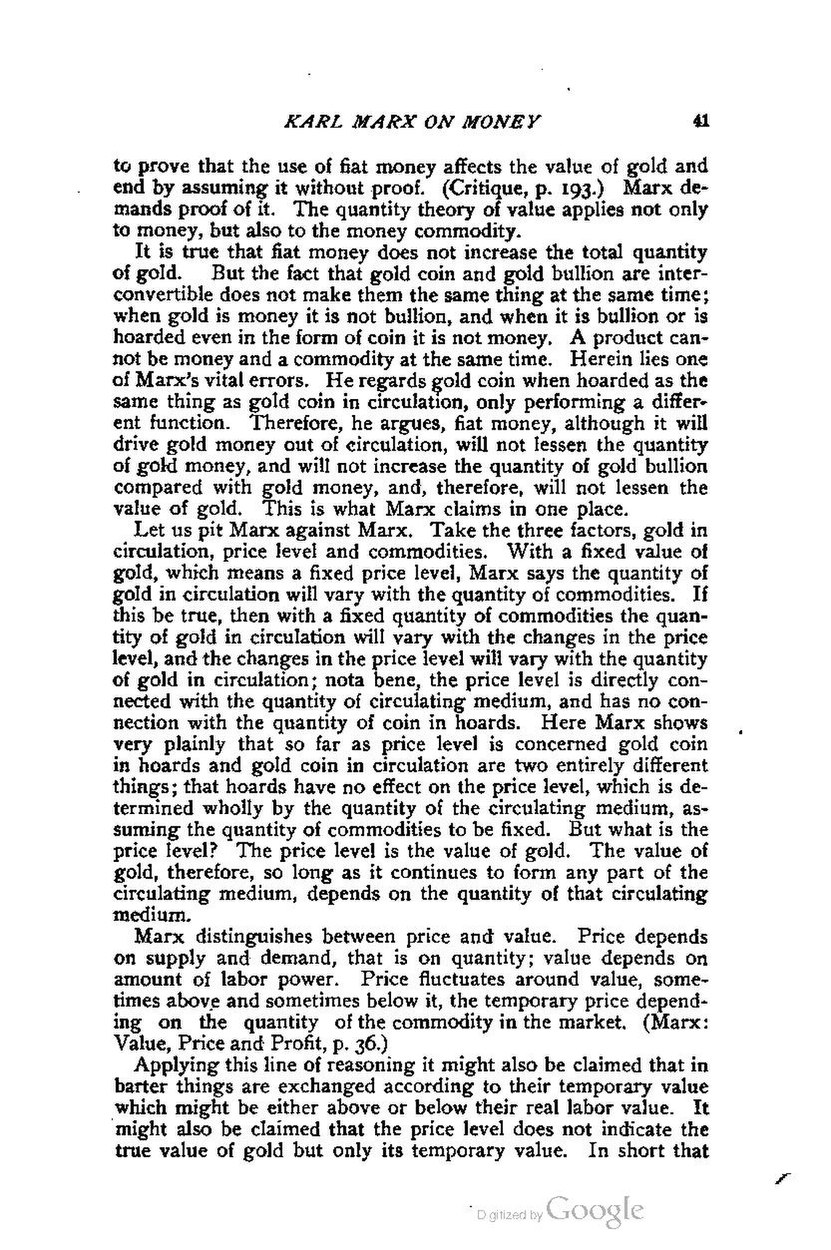to prove that the use of fiat money affects the value of gold and end by assuming it without proof. (Critique, p. 193.) Marx demands proof of it. The quantity theory of value applies not only to money, but also to the money commodity.
It is true that fiat money does not increase the total quantity of gold. But the fact that gold coin and gold bullion are inter-convertible does not make them the same thing at the same time; when gold is money it is not bullion, and when it is bullion or is hoarded even in the form of coin it is not money. A product cannot be money and a commodity at the same time. Herein lies one of Marx's vital errors. He regards gold coin when hoarded as the same thing as gold coin in circulation, only performing a different function. Therefore, he argues, fiat money, although it will drive gold money out of circulation, will not lessen the quantity of gold money, and will not increase the quantity of gold bullion compared with gold money, and, therefore, will not lessen the value of gold. This is what Marx claims in one place.
Let us pit Marx against Marx. Take the three factors, gold in circulation, price level and commodities. With a fixed value of gold, which means a fixed price level, Marx says the quantity of gold in circulation will vary with the quantity of commodities. If this be true, then with a fixed quantity of commodities the quantity of gold in circulation will vary with the changes in the price level, and the changes in the price level will vary with the quantity of gold in circulation; nota bene, the price level is directly connected with the quantity of circulating medium, and has no connection with the quantity of coin in hoards. Here Marx shows very plainly that so far as price level is concerned gold coin in hoards and gold coin in circulation are two entirely different things; that hoards have no effect on the price level, which is determined wholly by the quantity of the circulating medium, assuming the quantity of commodities to be fixed. But what is the price level? The price level is the value of gold. The value of gold, therefore, so long as it continues to form any part of the circulating medium, depends on the quantity of that circulating medium.
Marx distinguishes between price and value. Price depends on supply and demand, that is on quantity; value depends on amount of labor power. Price fluctuates around value, sometimes above and sometimes below it, the temporary price depending on the quantity of the commodity in the market. (Marx: Value, Price and Profit, p. 36.)
Applying this line of reasoning it might also be claimed that in barter things are exchanged according to their temporary value which might be either above or below their real labor value. It might also be claimed that the price level does not indicate the true value of gold but only its temporary value. In short that
